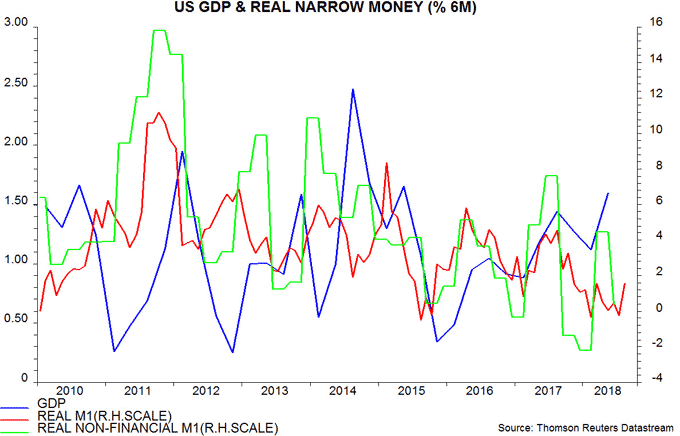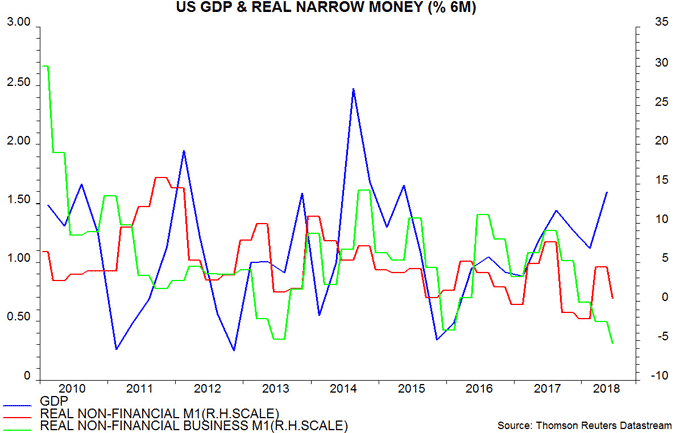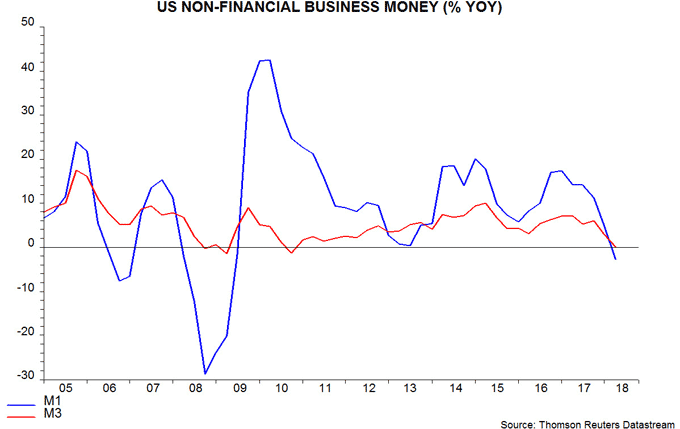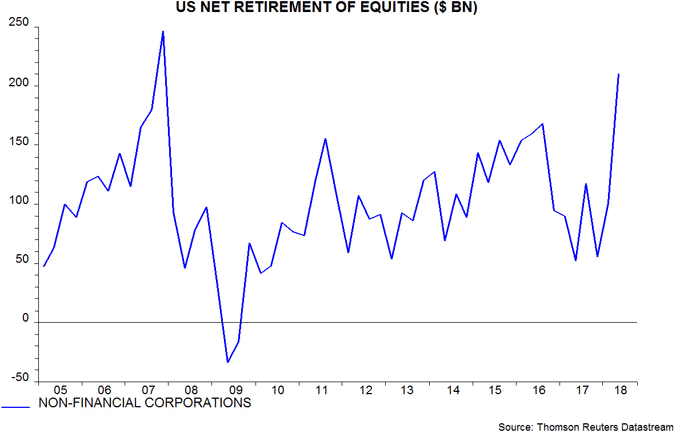
Janus Henderson: US corporate money slowing - business investment to disappoint?
US second-quarter financial accounts released yesterday provide additional information about recent monetary trends. Business money trends have weakened significantly despite tax cuts and foreign profits repatriation, consistent with an expected economic slowdown through early 2019.
02.10.2018 | 14:55 Uhr
US second-quarter financial accounts released yesterday provide additional information about recent monetary trends. Business money trends have weakened significantly despite tax cuts and foreign profits repatriation, consistent with an expected economic slowdown through early 2019.
The monetary forecasting approach employed here places particular emphasis on the narrow non-financial M1 measure, comprising holdings of currency and checkable deposits by households and non-financial businesses. The headline M1 aggregate also includes holdings of insurance companies, pension / retirement funds, money market funds, government-sponsored enterprises, finance companies, REITs, brokers / dealers and foreign non-banks (excluding official institutions). These holdings account for more than 30% of M1 (dominated by the foreign component, mainly currency) but are unlikely to be of relevance for assessing near-term prospects for spending on goods and services.
Most major countries provide a monthly sectoral breakdown of monetary data. In the US, unfortunately, non-financial M1 is available only quarterly with a reporting lag of over two months.
The first chart compares two-quarter / six-month changes in GDP, real M1 and real non-financial M1. Fluctuations in real narrow money momentum have generally led swings in GDP growth in recent years, with non-financial M1 outperforming M1.

Both real money measures lost momentum during 2017 but there was a divergence in early 2018, with headline M1 remaining weak but non-financial M1 rebounding. This rebound was consistent with the expected impact of tax cuts and has been reflected in recent / current strong economic data.
The financial accounts show that M1 was dragged down around end-2017 by falls in money holdings of money market funds, GSEs and REITS.
The divergence between the two measures, however, closed in the second quarter, with the two-quarter change in real non-financial M1 falling back sharply. Both real M1 and real non-financial M1 barely grew between December and June. Two-quarter GDP growth is likely to have peaked in the second quarter and may fall significantly into early 2019.
The weakness in non-financial M1 has been driven by the business component: real M1 holdings of non-financial businesses contracted by 5.3% between December and June – second chart. Corporations, which account for nearly 80% of non-financial business M1, were responsible for the decline, with holdings of unincorporated businesses rising.

Business broad as well as narrow money trends have weakened. M3 holdings of non-financial businesses rose by only 0.2% in nominal terms in the year to end-June, while M1 contracted by 2.8% – third chart.

Why hasn’t business liquidity benefited from post-tax profits strength and foreign earnings repatriation? The financial accounts show that non-financial corporations repatriated $52 billion of foreign profits in the second quarter after $173 billion in the first quarter. This inflow, however, was used to finance increased share buy-backs and cash take-overs: net retirement of equities rose to $101 billion in the first quarter and $210 billion in the second quarter – fourth chart. Corporations have also slowed bond issuance this year.

The distribution of money by corporations casts doubt on hopes of an internally-financed boom in business investment. The corporate flow has supported money growth of households but pass-through to consumer spending may be small.




Diesen Beitrag teilen: